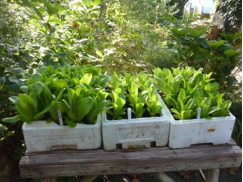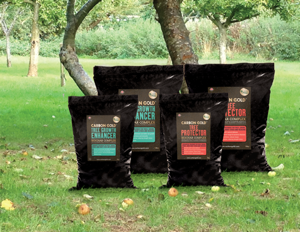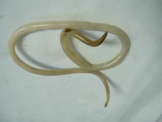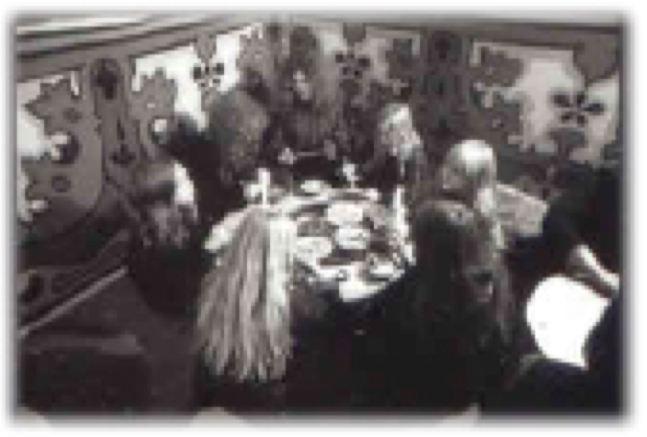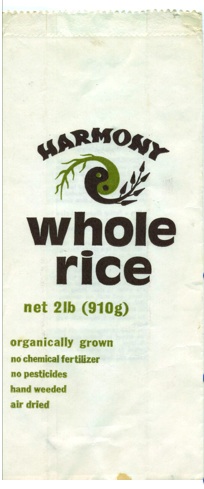In 2005, the US government paid $180 billion in direct and indirect subsidies to American farmers.
MY GREAT-GREAT-grandfather Lars Dugstad emigrated to America from Norway in 1842. He lived in a dug-out cave for fifteen years while he cleared eighty acres of virgin Koshkonong Prairie land in Wisconsin. His was the typical pioneer experience.
His son Ole, my great-grandfather, went to Nebraska in 1887 and broke the prairie sod on 160 acres of land in Dakota County. Ole’s son Lewis, my grandfather, farmed it until I was born there in 1944. Lewis’ only son, my Uncle Floyd, sold it and went on to become one of the first beef feedlot operators on the farm he bought across the Missouri River in Iowa.
Floyd offered me 625 acres in 1966, but I didn’t like the idea of sticking diethylstilbestrol hormones behind the ears of cattle, and I made the fateful decision to come to London instead and open a macrobiotic restaurant. That led on to a career in the retail, manufacturing and marketing of organic foods that included Whole Earth Foods and Green & Black’s chocolate, and also my work with the Soil Association.
Uncle Floyd’s son now farms those 625 acres as part of an expanded total of 1,600 acres – all farmed with just one assistant. Last year he lost $40,000 on sales of $300,000 but ended up with a net farm income of $110,000, thanks to a hefty $150,000 subsidy from the US government.
So from Thomas Jefferson’s dream of a rural democracy, where every self- sufficient and prosperous family had a small farm or business, we have reached – in three generations – a corporate state where a viable family farmer needs 1,600 acres, a lot of machinery and GM crops and still operates at a huge annual loss that has to be made up by subsidies.
In 1944 Charles Erwin Wilson, President of General Motors and Director of the War Production Board, called for a Permanent War Economy to prevent a post-war return to the Great Depression. The Permanent War Economy, in giving birth to the military-industrial complex, also gave birth to the military-agricultural complex. Both operated on the same principle – if the free market wouldn’t take everything that was produced, the government would take up the slack, keeping the economy humming. The same companies that made tanks for the war could make tractors and pick-up trucks; the same companies that made nitroglycerine explosives could make nitrogen fertilisers.
The problem was that farmers weren’t up for it. Either a command economy or false economic signals were needed to force them to industrialise and adopt chemical inputs.
In the UK, the Soil Association was lobbying hard for a sustainable post-war agriculture based around rural communities and the avoidance of chemical fertilisers. ICI lobbied hard for increased nitrate use and eventually, with the Agriculture Act of 1947, ICI won the argument and the British government fell in line with the policy of its European and US counterparts by introducing a direct cash subsidy of ten shillings on every bag of nitrate fertiliser.
This subsidy made all the difference to farm economics: once nitrates were in use weeds thrived on the extra nutrients and created a market for herbicides, fungal infections proliferated on the densely packed plants and created a market for fungicides, and the elimination of fertility-building rotations created a market for insecticides to deal with the inevitable build-up of pest populations. CO2 emissions from the soil escalated, as soil structure and carbon-rich humus collapsed under the onslaught of chemical fertilisers.
Subsidies set land prices and farm incomes from then on. Agriculture had, in effect, been nationalised and was part of the Permanent War Economy that has been the economic model of the West and of Russia ever since. From the start, US farmers saw what was coming and formed leagues in which they all faithfully promised each other never to accept subsidies. But once some farmers took the subsidy, they could sell their crops more cheaply; the rest had to follow suit if they were to be competitive. The inherent bias of government policy towards larger producers led to the steady extinction of small farms.
The same thing happened in industry. The US Government pays out $167 billion a year to support the US’s largest corporations. In 1950, 25% of US tax income came from corporations. That figure is now 10%.
In 2005 the US government paid out more than $30 billion in direct payments to US farmers and an estimated further $150 billion in indirect subsidies including tax breaks on fuel and equipment, tariffs, protective pricing, drought loss payments and purchasing surpluses.
The biggest recipients of this support are the largest corporate farmers and commodity giants like Cargill and ADM (Archer Daniels Midland), agrichemical and seed suppliers like Monsanto and Dupont, and huge corporations such as the Fanjul family’s Florida Crystals sugar empire and meat producers Tyson and Smithfield.
The real damage from this subsidy policy is not just the financial cost to the US economy, though the numbers are significant. The real cost is to the health of the global economy, to the stability of our climate and to human health.
THE COST TO THE health of the American people has been spelt out by such authorities as the Harvard School of Public Health. The fast-food industry has contributed directly to the epidemic of obesity, diabetes, heart disease and osteoporosis. These degenerative diseases threaten the future capacity of Western economies to finance health care. If subsidies on corn and soybeans alone were removed, the cost of a cheap hamburger would be forced up from $1 to $3. This would directly affect rates of junk food consumption. If the subsidised rangeland that supports the production of cheap calves were charged at a market price and if the externalised costs of the beef industry such as unsustainable levels of water pollution, environmental degradation and greenhouse-gas production were taken into account, the same hamburger would cost closer to $5 or $6. At this level hamburger consumption would be reduced to the healthier levels that public health authorities urgently recommend. The cost of obesity to the US is estimated at $117 billion just in lost work days and in additional health-care costs, a high price to pay for unfeasibly cheap burgers.
But the real harm of the subsidy system is to the global economy. So, the question is: How do US subsidies cause world poverty?
US farmers grow maize at a cost of 6¢ per pound. A Mexican farmer can grow maize at a cost of 4¢ per pound. So you would think that Mexico would export corn to the US – and at the very least would dominate the US domestic market. But the world market price is set at 3¢ per pound on the Chicago Board of Trade on the basis of subsidised US farmers. If the Mexican farmers seek to make a profit over their cost of 4¢ per pound, grain traders around the world will import or, more importantly, threaten to import US corn in order to continue to purchase at a price of 3¢ per pound. In the cruel world of subsidised agriculture, the so-called inefficient Mexican farmers go out of business trying to compete with truly inefficient US farmers whose cost of production is really 6¢ per pound, but who have the mighty US taxpayer prepared to subsidise their farm-gate price down to 3¢ per pound. In recent years 100,000 Mexican farmers have been driven off the land, denied access to their domestic market by US imports. Real trade justice would be to either abolish the subsidies or allow farmers all around the world to get the same subsidies from Uncle Sam.
Subsidies in the US determine the commodity prices quoted on the Chicago Board of Trade, which are the benchmark for commodity prices worldwide. It is not the actual exports as much as the fact that a phoney price is the global standard that causes the damage.
Majority world farmers, if they were allowed to benefit from their greater efficiency, would prosper from both increased income and land values, their countries would prosper, and problems of disease, overpopulation and poverty would be greatly alleviated by the increased domestic and foreign income. We also know that, as family income increases, family size decreases: it’s the paradox of wealth but another good reason to liberate food prices in order to non-coercively stabilise global population growth.
So can we quantify the actual cost of subsidies to the world economy?
A simple calculation can be made on the basis of the US and EU current subsidy levels. James Wolfensohn, President of the World Bank, sets the total annual subsidy spend at $350 billion – nearly $1 billion a day. Subsidies now represent 50% of net farm income in the US and the EU.
This means that, if subsidies were not in place, US farmers would need to double their prices to make a living.
On the basis that the US and the EU represent one-sixth of the world’s food production, we can assume that, if commodity prices doubled worldwide, the increased income for the majority world would be $2.4 trillion per annum. Total foreign aid amounts to $50 billion, or just 2%, which is paid back to the victims of what amounts to global theft from farmers outside the industrial countries that benefit from the rigging of market prices.
However, because the producers of the majority world operate on lower cost bases, are more efficient and have a higher real productivity level, the price of agricultural commodities would probably not double, as market forces would come into play at this stage. US and EU production of cereals and oilseeds would fall dramatically if faced with global competition and a level playing field.
THERE IS ANOTHER factor. The price of oil is going up. It was $12 a barrel in 1998, George Bush came to power in 2000, and it has now touched $70 a barrel and shows little sign of falling. The increase in the price of natural gas has already led to the closure of half of North America’s fertiliser manufacturing capacity in the past four years.
Demand for our diminishing reserves of natural gas for domestic heating and cooking or as motor fuel will ensure that natural gas, which generates tax income, will always be, as a priority, used in those applications where it can bear the extra cost of being taxed. This does not include fertiliser manufacture, where it is already too expensive. People are prepared to pay a 300% tax on petrol and diesel for their cars, because consumers put a high value on personal transportation. When similar taxes are imposed on bunker oil, aviation fuel, heating oil, natural gas and power generation, people’s subsequent choices will reflect the real cost of fossil fuels.
Growing food needs energy. To produce a calorie of food using fossil-fuel-dependent industrial farming takes fifteen calories of energy input. To produce a calorie of food organically still uses five calories of energy input. A gardener with a hoe uses one calorie to produce twenty calories of food. Organic farmers are closest to optimising energy use with productivity, and since their only fossil-fuel use is in running tractors and equipment, they will have the economic advantage as energy prices increase. When the oil price reaches $100 per barrel farmers will no longer be able to justify the use of inputs such as fertilisers and pesticides. On a global scale, the farmer who is ‘carbon-frugal’ is due for big rewards.
Carbon isn’t the only greenhouse gas we get from agriculture. Intensive cattle-rearing also leads to increased methane emissions. Feeding a cow on corn and soybeans leads to an acid rumen, incomplete digestion, and methane emissions several times more than from a cow fed on grass and hay. When you consider that the combined weight of cattle on this planet exceeds that of human beings, that’s a lot of gas. The widespread use of nitrogen fertilisers is the main source of atmospheric nitrous oxide, a gas that is nearly 300 times more warming in its effects than CO2.
As the price of oil-based inputs rises, farming on a small scale will become more attractive. Hobby farming, where farmers have other sources of income but use their farmland to augment that income, will expand. We will see more diversity in the countryside, and more vibrant local economies.
This article is based on the Martin
Radcliffe Lecture 2006. www.brookes.ac.uk/public_lectures






























